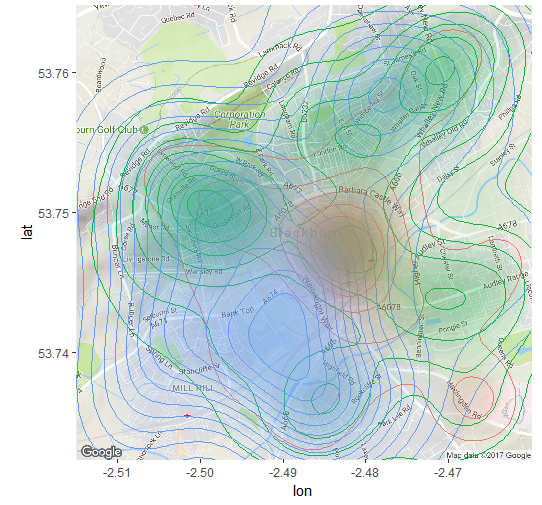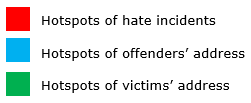Analysis of police-recorded hate crime in Lancashire
Introduction
Understanding hate crime is a priority for police forces across England and Wales. Since the EU referendum in June 2016, there has been a renewed emphasis on the importance of preventing hate crime and providing support for victims. The Home Office reported an increase of 29% in the number of hate crimes recorded between 2015-16 and 2016-17 which represents the largest increase since the Home Office began recording figures in 2011-12. In addition, the Crime Survey for England and Wales (CSEW) has indicated that up to six times as many hate crime incidents occur every year than are reported in police figures.
The objective of this research was to describe the nature as well as the spatial density of reported hate incidents and crimes in Lancashire using police-recorded data.
Data and methods
The research was based on the quantitative and spatial analysis of administrative data provided by Lancashire Constabulary. The data comprised the 6,485 police-recorded hate crimes and incidents which took place in Lancashire during the study period (December 2015 - February 2017).
In addition to performing basic descriptive statistics (such as bar charts) to summarise the data, density maps were produced for various towns of Lancashire. Highlighting hot spots of hate incidents, as well as areas populated by a high proportion of victims or offenders.
Key findings
Some of the key findings from the analysis of routinely-captured hate crime police data in Lancashire are:
- The majority of the employed victims work in the private sector with most of these being taxi drivers (10%) and shop employees (9.5%). This suggests that hate incidents can frequently occur in the workplace/whilst on duty at work
- 10% of the victims are university students and school pupils
- 85% of hate crimes and incidents occur at night (between 7pm and 6am)
Hate crime offenders and victims tend to live in separate neighbourhoods, with most of the hate incidents occurring in the town centre where the two populations meet (see Figure 1).


Value of the research
Despite efforts deployed by the police to encourage the reporting of hate crime, under-reporting remains a significant problem. As such, it is crucial to make sense of the crimes that are indeed reported to the police. This research provided Lancashire Constabulary with a clearer picture of the profile of victims and offenders of hate crimes as well as where and when the incidents happen, thus ensuring resources can be allocated effectively.
The learning from this project has been used to re-focus a multi-agency response in tackling hate crime in Lancashire. It has emphasised the importance of accurate crime recording and application of appropriate analytical techniques.
Researchers
Natacha Chevenoy (1), Leeds Institute of Data Analytics and School of Law, The University of Leeds
Carly Lightowlers, The University of Liverpool
Nick Malleson, Leeds Institute of Data Analytics and School of Geography, The University of Leeds
Partners
Lancashire Constabulary
